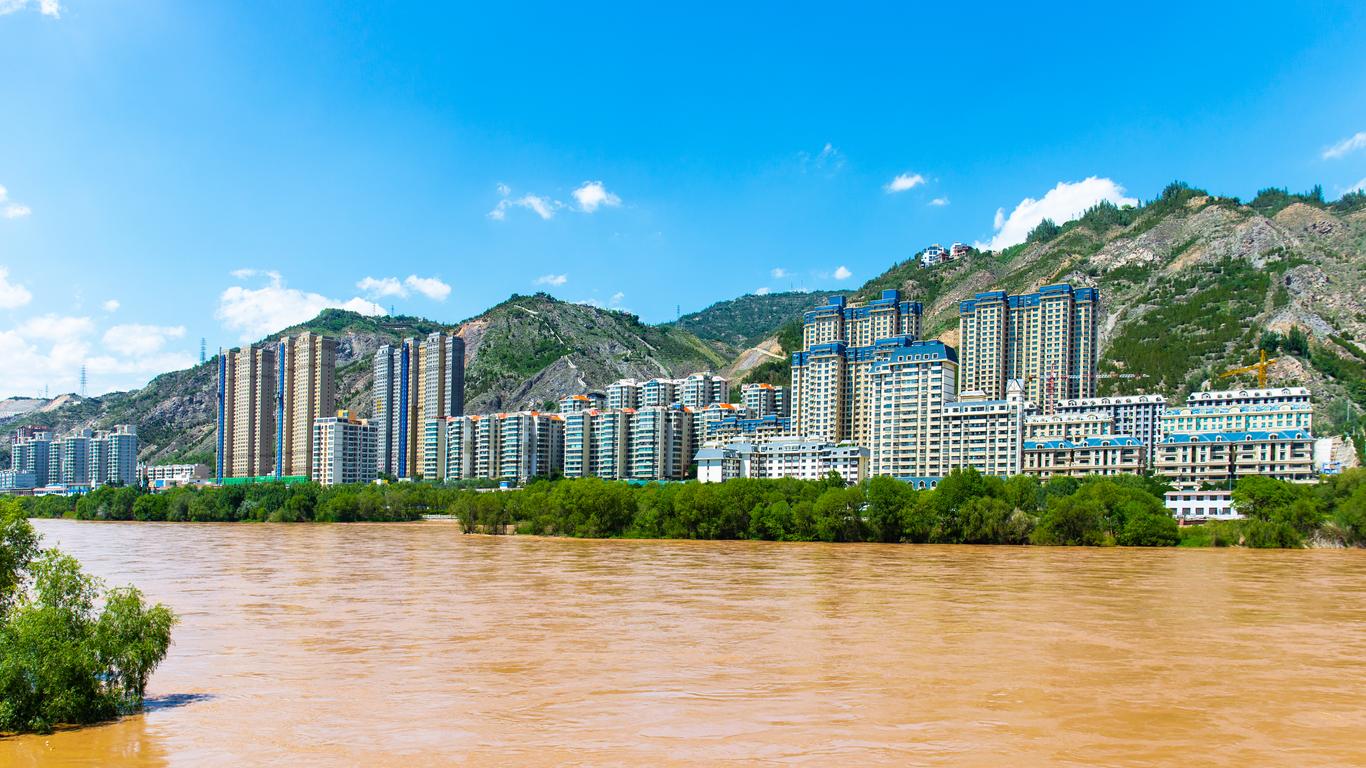The capital and largest city in Gansu Province, Lanzhou lies on the banks of the Yellow River in Northwest China. It was once a major stop on the Northern Silk Road and known as the “Golden City”, and serves as an important transportation hub and industrial centre today.
The Gansu Provincial Museum offers an excellent introduction to the city, with an outstanding collection of ancient pottery, precious silks and fossil remains which reflect Lanzhou’s rich history. Goods traded along the Silk Road are on display alongside a four-metre tall mammoth whose remains were excavated from the Yellow River basin. It’s also home to the famous Galloping Bronze Horse relic which is considered an ancient Chinese treasure. Along the southern bank of the Yellow River is the Waterwheel Garden where traditional waterwheels once used to irrigate the surrounding farmland are on display, together with the Yellow River Mother sculpture. Designed by Gansu artist He E, this granite monument symbolises the river’s parenting and cultivation of the Chinese people. Also of note are the ancient temples which scatter Wuquanshan Park at the foot of Gaolan Mountain the south of the city and the White Pagoda which overlooks the Yellow River from a mountain top in Baitashan Park. The first permanent bridge to be built over the Yellow River, the Zhongshan Bridge, is also found in Lanzhou, together with one of the largest mosques in China, the Xiguan Mosque, while just outside the city are the cave grottoes of Bingling Si, adorned with Buddhist sculptures and mural paintings.
Lanzhou Airport is located around 70 kilometres north of the city and offers flights across the country, while Lanzhou Railway Station is a major hub which connects western Chinese provinces with those in the east. Public buses are the main means of getting around the city, with a newly built subway system having just started operations.
Not only was Lanzhou a link on the ancient Northern Silk Road, but it served as an important Yellow River crossing site since at least the first millennium BC. After the fall of the Han Dynasty in the 3rd century AD, the city became the capital of successive tribal states before emerging as a centre for Buddhist study from the 5th century.





